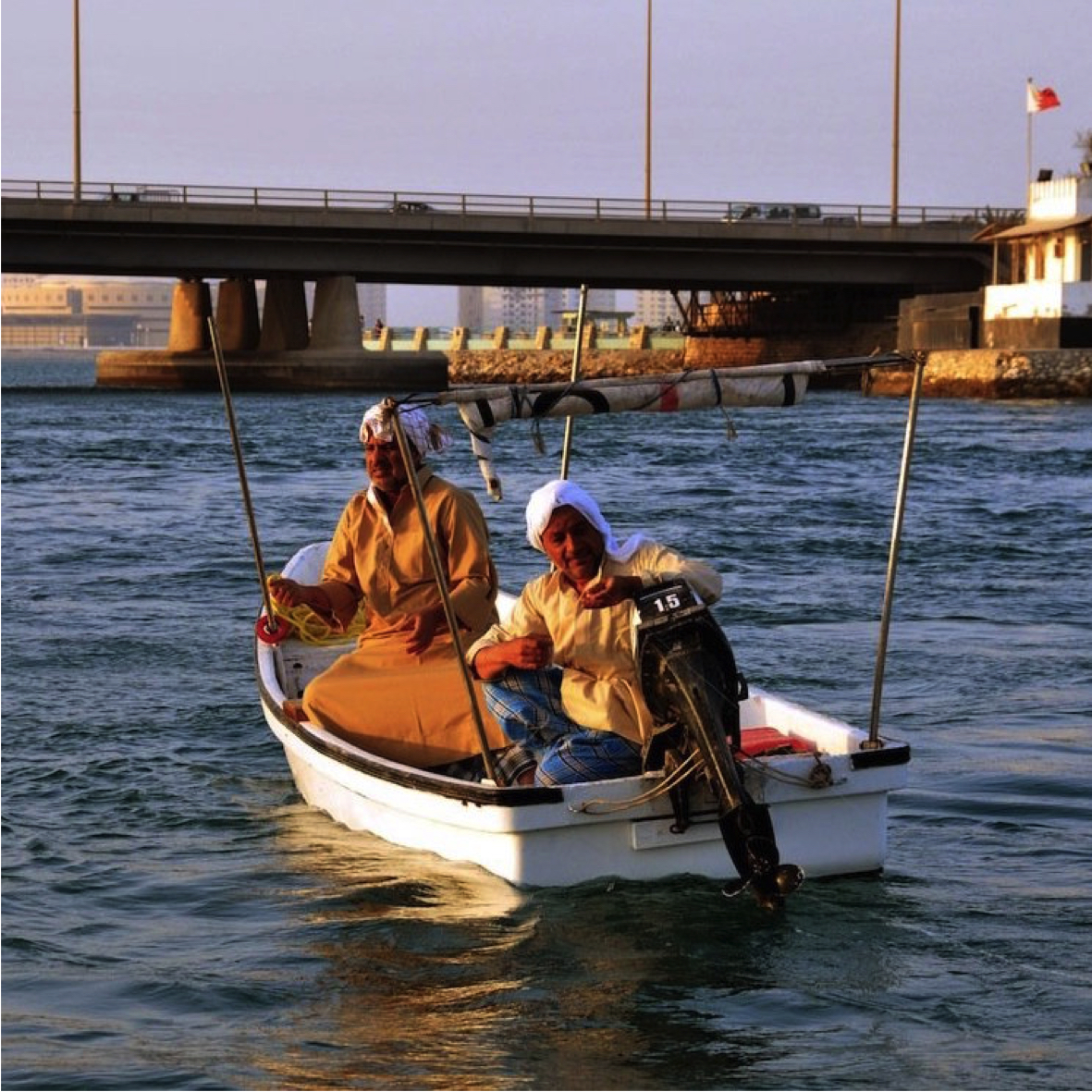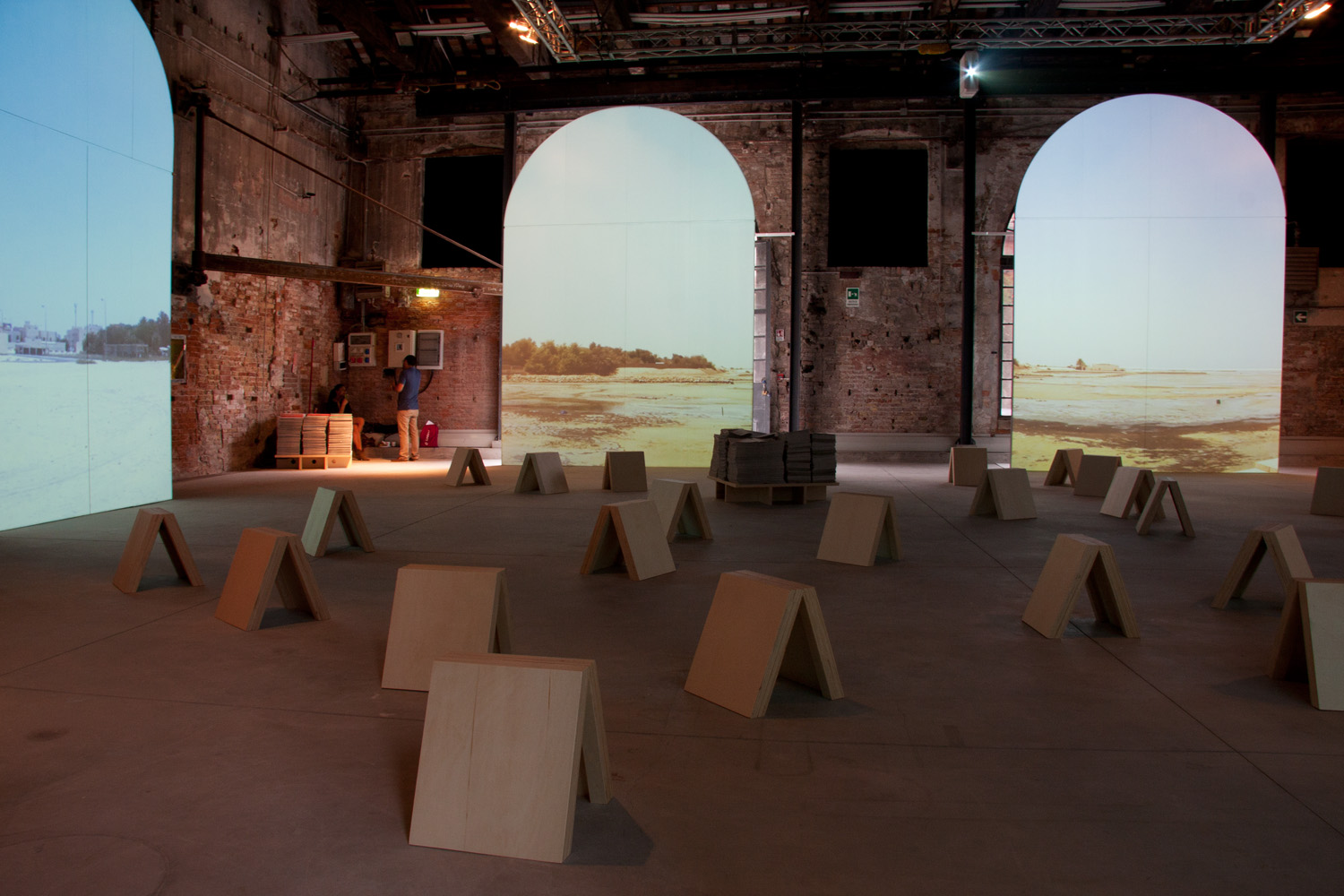
Still from Mounir Fatmi’s ‘Save Manhattan’
The idea of ‘the end of art’ first appeared in the 19th Century, and was quickly denounced by connoisseurs as modern art made its way into painting salons; yet, the idea again returned in the 1960s when it became a household slogan not only among critics and experts, but also artists themselves. What was implied by the idea of ‘the end of art’ wasn’t that art was dead – for art, good or bad, was, and still is being produced – but that, to paraphrase the political theorist Hannah Arendt, the way in which artists’ questions were framed and answered had lost plausibility.
In the world of art, the problem turned out to be not that there wouldn’t be any more art, but that art history was now faced with endless accusations of cultural hegemony, colonialism, political ideology – and more than anything else – of making art and artists politically irrelevant. These accusations were especially important at a time when non-Western artists began to reach galleries, dealers, and panels. Additionally, the ‘end of art’ referred to the birth – or rather, the privileged place – of conceptual art; that is, of the fusion of art and theory, as if its final phase, art were to become a theory about itself. As Arthur Danto, one of the main proponents of the ‘end of art’ thesis, once wrote, ‘Art carries no historical significance whatsoever’.
Yes – one could say that art, or art history no longer has a specific trajectory, and that only individual works now exist. However, this does not mean that artworks are not more dependent on history (in a broader sense) than ever before. The book, War and Other [Impossible] Possibilities: Thoughts on Arab History and Contemporary Artby Lebanese art historian and photographer Gregory Buchakjian is just one example of how history has heavily inflected the practices and discourses of contemporary art in the Arab world. It is not an art history book in the traditional sense, however – like those embedded in the authority of scholars, connoisseurs, and experts – but rather a book about the art of history.

Emily Jacir – Sexy Semite (Detail)
As Buchakjian notes, ‘The number of Arab conflicts today largely surpasses the number of Arab countries’. Thus, it would seem an almost impossible task to speak about art in general terms, not only because of the geographic and thematic variety of such a large region, but also because of the turbulent history, that for better or for worse, produced this art. Buchakjian’s book nevertheless focuses on an art collection founded in 2007 by Qatari art patron Sheikh Abdulrahman bin Saud Al Thani and Lebanese art dealer Saleh Barakat, which aimed to bring together artworks related to the implications of the 9/11 incident on the Arab art scene from 2001 up until the rise of the Arab Spring a decade later.
While much is known about the way in which Westerners – and the West in general – have reacted to the rise of ‘Islamic terrorism’ (a term whose use is suspect, as it precedes 9/11 by decades, having been used in contexts such as the Palestinian struggle, the Lebanese Civil War, and the first Gulf War, for instance), little is known about how Arab societies reacted to these moments of historical transformation. More than just a point of reference, the book and the collection are both attempts to visualise these reactions through art.
The 19 artists represented in Buchakjian’s book span across different generations in-between the first Arab-Israeli war, and the broader Arab Spring, and though preference is given to painting, other formats are present as well, such as photography, installations, and mixed media works. It is also worth noting that over half of the artists are Lebanese; and, while that speaks volumes for the privileged place that Lebanon occupies in contemporary Arab art, the works in question are not necessarily representative of the kind of Lebanese art present in galleries in permanent exhibitions. Rather, they belong to a larger thematic assembly that reflects well on the historical and political vicissitudes of the Arab world at large.
Art is one of the few reliable loudspeakers that can help one understand what exactly has taken place in a region where memory is constantly interrupted and distorted by chronic violence
Buchakjian resorts to the use of aesthetic fragments interwoven with political commentaries and visual journeys between the selected works – side by side with other known and lesser-known works of Arab and Western artists living in the Arab world – creating an effect similar to that of Walter Benjamin’s Passages, a book which explored the visual culture of Paris in the late 19th Century. As Buchakjian shows, the ‘barbarian’ makes a spectacular comeback in the international media as the hater and destroyer of modernity, wearing the keffiyeh or the veil, the antitheses of civilisation. Concurrently, an interest in Middle Eastern art grows all around the ‘civilised’ world, perhaps not as a reflection of the experience of these wars and conflicts, but as a living document.
‘Art from the Middle East became a new iconic representation of the Middle East. As Véronique Rieffel pointed out, “these artists became ‘Muslims’ from one day to the next, even those who were Christian, such as Mona Hatoum’, Buchakjian’s book explains. In reading such passages, one is reminded of the optimistic period of the Middle East peace process when Hatoum returned to Jerusalem to work on her installation, Present Tense, which was constructed entirely out of Nablus soap – the ancient factories of which had been attacked by the Israeli army – and on which she drew the map of Palestine according to the Oslo Accords. In the words of Buchakjian, this was ‘an impossible map for an impossible country, an impossible life, and a certainly impossible peace’.

Mona Hatoum – Present Tense (Detail)
Other artists such as Mounir Fatmi and his celebrated Save Manhattan series appear in the collection, with subversive attempts to dislocate these iconic representations and narratives. According to Stephen Dewyer of Yale University, ‘Fatmi scrambles the authority of spectacles meant to orient a class to a symbolic object (Muslim, French, Moroccan, proletarian, etc.) by locating such identity in an origin of infinite possibility’. Similar is the procedure of Palestinian artist Emily Jacir in her work, Sexy Semite, which challenged the American public in narratives about identity and belonging in the Palestinian-Israeli context.
The idea of Arabs as barbarians – a term which refers almost exclusively to Muslims, obliterating the Arab identity of Christians and Jews in the Arab world – is contradictory, as it presents the Middle East as a field of absolute otherness, contrasting with the image of the Orient during imperial and colonial periods as the most external part of Europe. Paintings such as Ali Hassoun’s Untitled, with its Warhol-like background displaying a certain irony about this ambiguity of representation, and other works related to the American occupation of Iraq – in particular, Saadi Al Kaabi’s Abou Ghraib – silently reflect the consequences of 9/11 and other collateral historical events for the peoples of the Middle East.
It seems to be a constant in the Middle East that in the midst of such a Tower of Babel (as an installation by the Syrian artist Diana Al-Hadid suggests), art is one of the few reliable loudspeakers that can help one understand – in the long term – what exactly has taken place in a region where memory is constantly interrupted and distorted by chronic violence. Buchakjian in his book poetically remarks, ‘War. As if all other possibilities were impossible’. He then goes on to conclude his timely meditation, positing that ‘The highs and lows of Arab history are part of the violent and tormented history of mankind … In the contemporary age, man can ignite the Apocalypse at any time. It’s terrifying and sublime’.

Diana Al Hadid – The Tower of Infinite Problems
The Colombian sculptor Doris Salcedo, who has spent decades imbuing her work with the memory of political violence in her native country, says regarding the importance of articulating the recent past in art:
Man has the need to draw from the past criteria to act in the present. When man does not understand his past, his own history, he is deprived of reference points, and finds himself suspended between a past that is perceived as an accumulation of incomprehensible events, and a future that he cannot possess. Therefore it seems like an abyss in front of him. The past is the only place where can find both our origins and our destiny.
***
REORIENT recently spoke with Buchakjian about the creative process of his book, his favourite pieces in the collection, and the representation of war in Middle Eastern art.
Do you think the Middle East is faced with a challenge in representing images of the West in art, the same way that Western popular culture does with respect to the Middle East?
The same way? Certainly not. Let’s not forget that Western popular culture is a dominant culture that is appropriated in all parts of the world, including the Arab world. To answer your question, the Middle East includes a very wide and heterogeneous group of peoples that do not share the same ideas and visions about the West. Some can see it as an ideal – other as the ‘Grand Satan’.

Hassan Musa – Saint Georges Terrasant le Dragon et le Museé de Bagdad II
If you had to pick one work from this collection, which one would it be, and why?
Many pieces from the collection have been of great interest. [I would choose] Hassan Musa’sSaint Georges Terrasant le Dragon et le Museé de Bagdad II for its exceptional embroidery technique, Emily Jacir’s Sexy Semite for all the narratives in and around it, and Mounir Fatmi’sSave Manhattan video, a very poetic work.
What comes after war for artists in the Middle East? More war? Does representation stop here or are there other (impossible) possibilities?
Being an art historian and an artist, I live with this question day and night. War has definitely been a dominant subject in art in the Arab world, and it’s no wonder why. But it’s not the only one. Youssef Nabil and Chant Avedissian explore popular culture. Nadim Asfar has been digging into intimacy. Akram Zaatari has been working on sexuality before his major historical photographic landscapes. However, these apparently ‘apolitical’ artworks are often related to specific events occurring in the region.
***
On how the politicising of art threatens its integrity, Arthur Danto notes, ‘There’s a sad lesson that activist artists must sooner or later learn: the goodness of the message of art does not translate into the goodness of art’. It’s difficult to know right now whether the motivations for such recent examples of historically informed art were political or not. One would be tempted to say they were. Only in the years to come will one be able to tell if the future of the Arab world – and of Arab art – will be as terrifying and sublime as the pieces presented by Buchakjian make it seem.
For the time being, the writing’s on the wall, and it seems to encapsulate his whole book in a single phrase: ‘Useless violence makes history. Useless violence makes art history’.










 It seems you’ve done a lot of stuff. You started with Scrambled Eggs, mixed for Mashrou’ Leila, Lumi, played in Zeid and the Wings and Lumi, did a few soundtracks, and you also have a solo album, Faded Postcards. What is your musical background, and who are/were your influences?
It seems you’ve done a lot of stuff. You started with Scrambled Eggs, mixed for Mashrou’ Leila, Lumi, played in Zeid and the Wings and Lumi, did a few soundtracks, and you also have a solo album, Faded Postcards. What is your musical background, and who are/were your influences?
